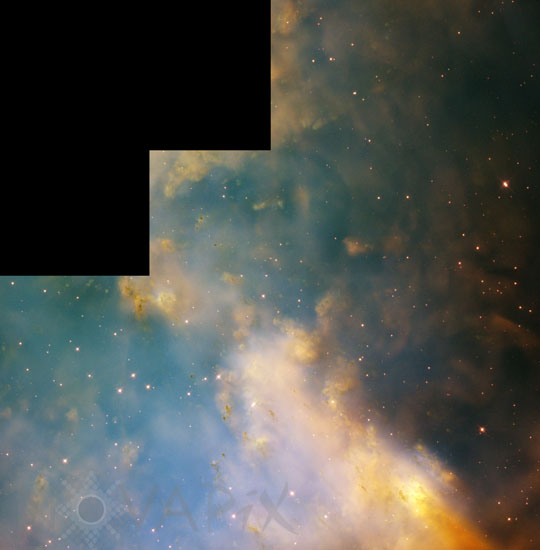Photo Agency - Astronomy - Space - Nature

Cometary knots in the Dumbell nebula
author: NASA/Hubble Heritage Team/Novapix
reference: a-nep68-53011
Image Size 300 DPI: 12 * 12 cm
The Dumbbell, a nearby planetary nebula residing more than 1,200 light-years away, is the result of an old star that has shed its outer layers in a glowing display of color. The Hubble images of the Dumbbell show many knots, but their shapes vary. Some look like fingers pointing at the central star, located just off the upper left of the image; others are isolated clouds, with or without tails. Their sizes typically range from 11 - 35 billion miles (17 - 56 billion kilometers), which is several times larger than the distance from the Sun to Pluto. The knots are forming at the interface between the hot (ionized) and cool (neutral) portion of the nebula. This area of temperature differentiation moves outward from the central star as the nebula evolves. In the Dumbbell astronomers are seeing the knots soon after this hot gas passed by. Dense knots of gas and dust seem to be a natural part of the evolution of planetary nebulae. They form in the early stages, and their shape changes as the nebula expands. Similar knots have been discovered in other nearby planetary nebulae that are all part of the same evolutionary scheme. This image, was taken by Hubble's Wide Field Planetary Camera 2 in November 2001. The filters used to create this color image show oxygen in blue, hydrogen in green and a combination of sulfur and nitrogen emission in red.
Contact : Stéphane Aubin +33-(0)9-51-26-53-76
© Novapix - All rights reserved


